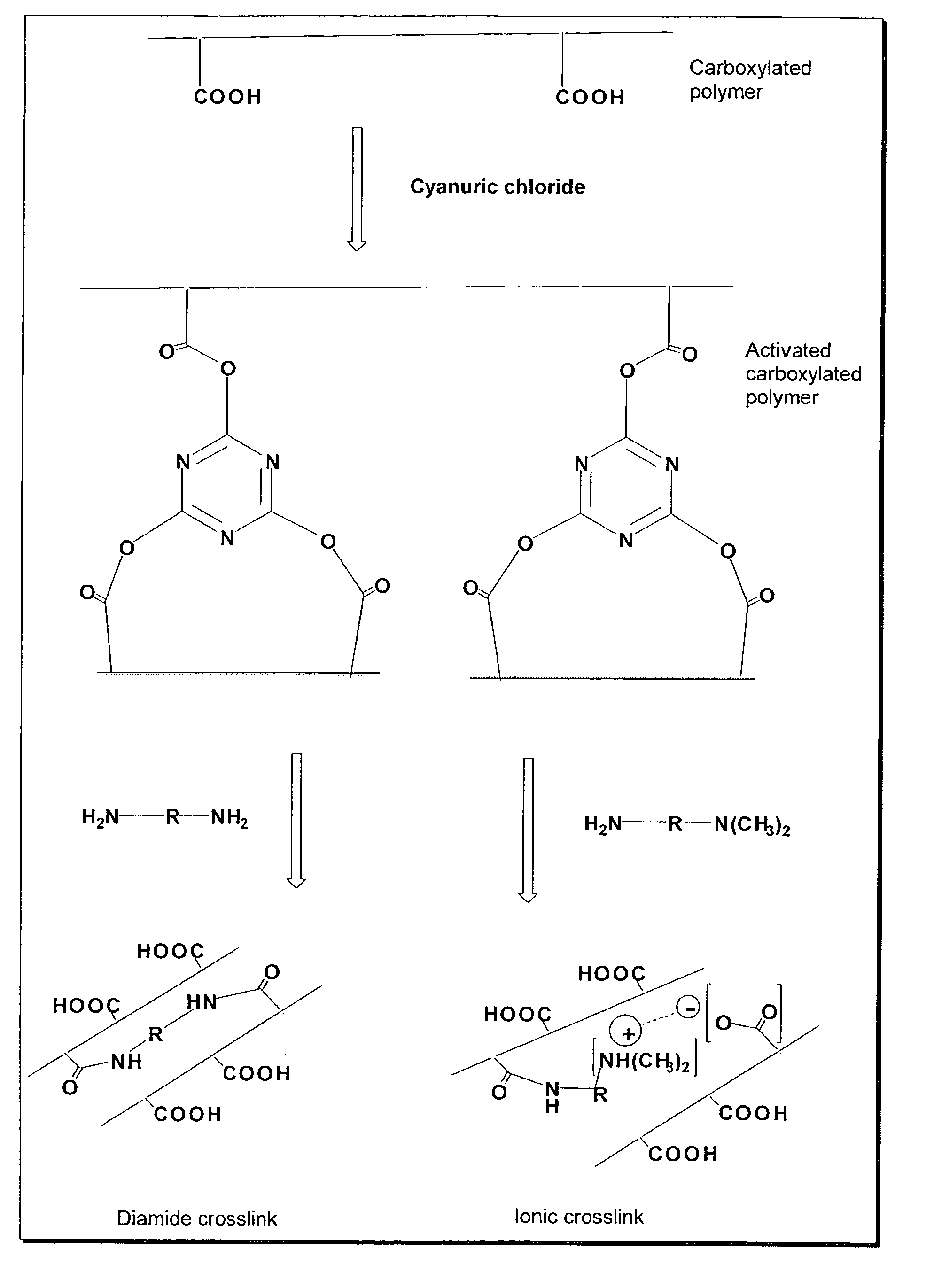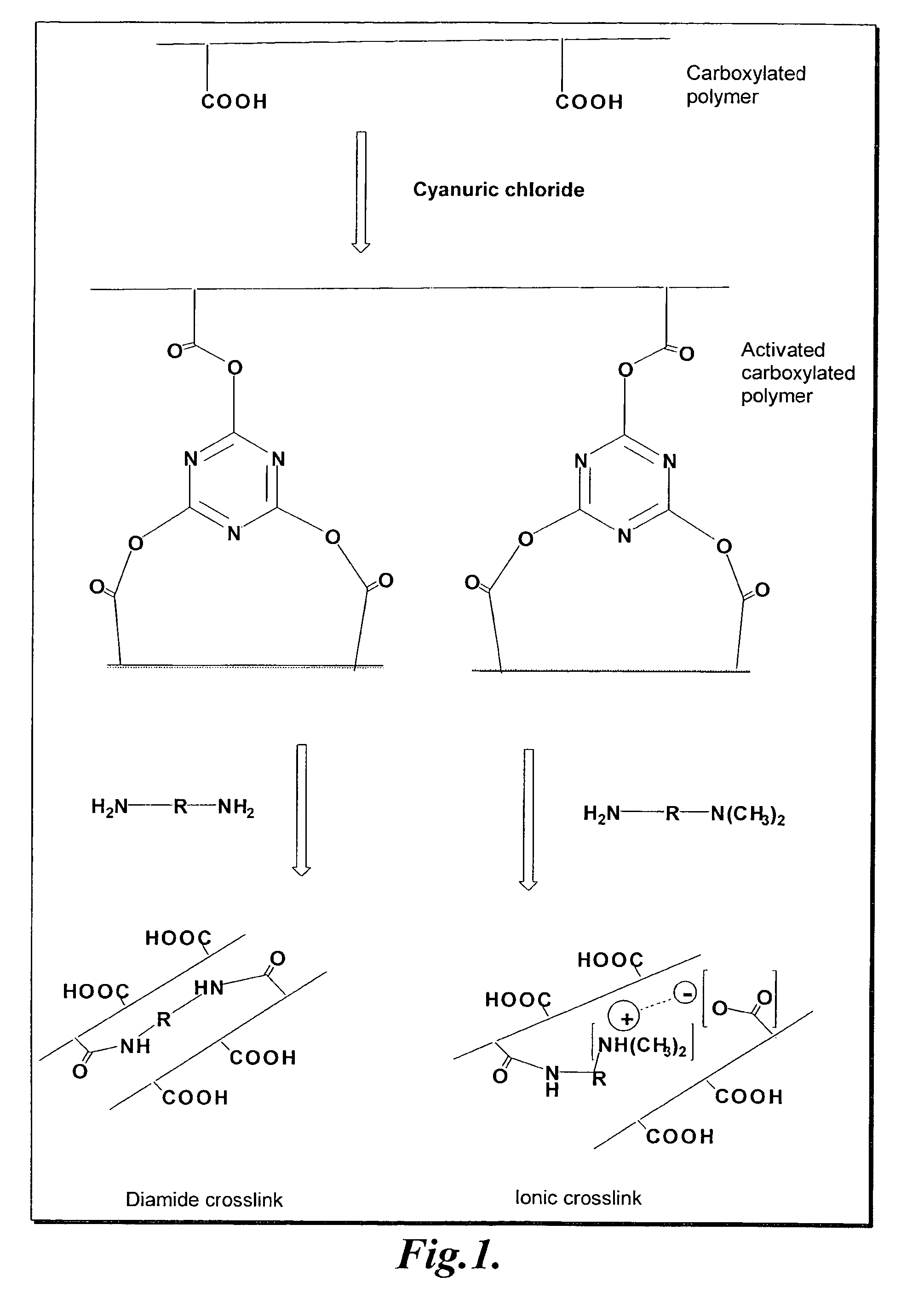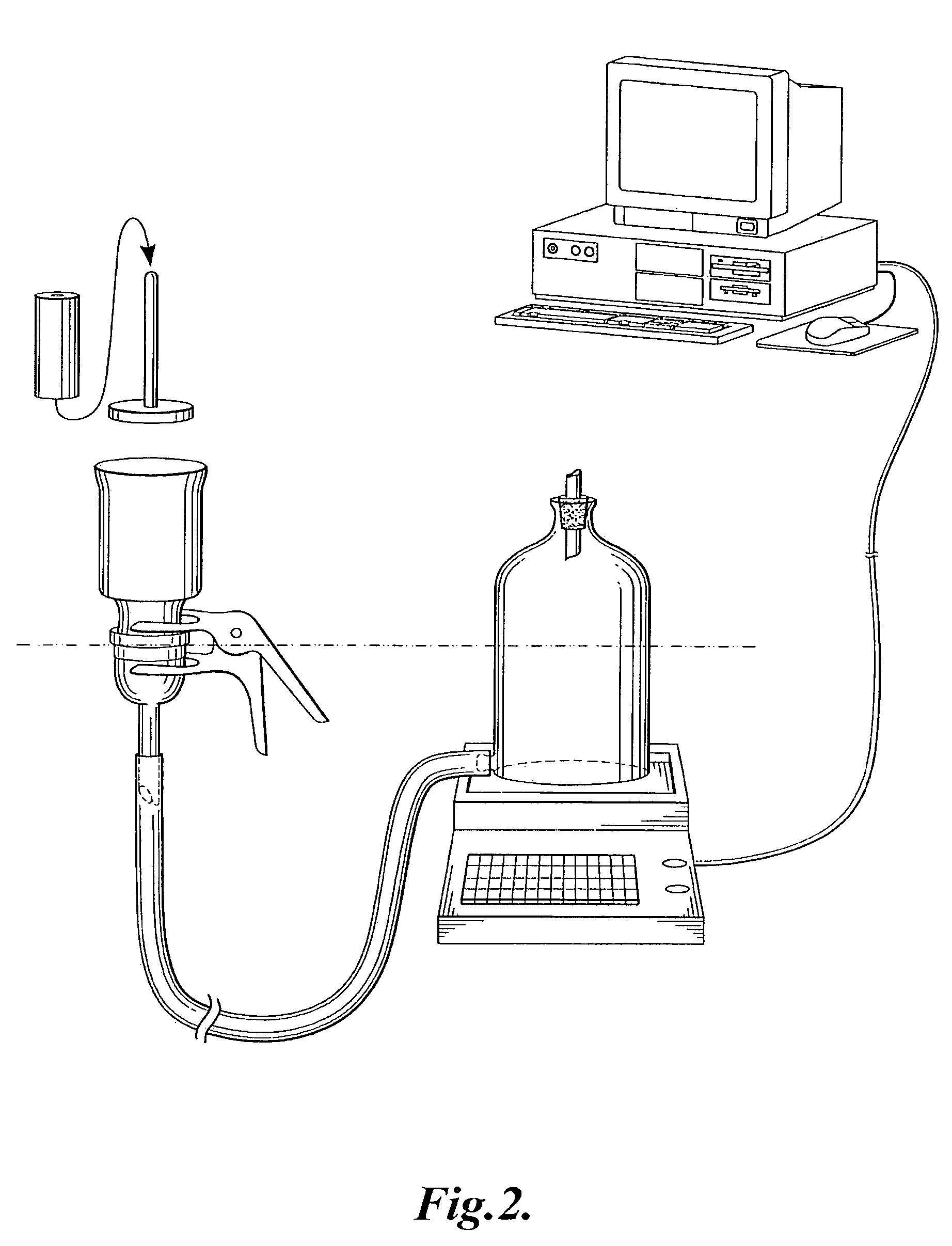Method of crosslinking a mixture of carboxylated polymers using a triazine crosslinking activator
a technology of crosslinking activator and carboxylated polymer, which is applied in the field of crosslinking a mixture of carboxylated polymers using a triazine crosslinking activator, can solve the problems of difficult ester formation, acid chloride preparation in large scale poses significant difficulties, and the formation of cellulose amides is not suitable for acid chloride, so as to achieve effective crosslinking
- Summary
- Abstract
- Description
- Claims
- Application Information
AI Technical Summary
Benefits of technology
Problems solved by technology
Method used
Image
Examples
example 1
The Preparation and Absorbent Properties of a Representative Diamide Crosslinked Carboxylated Polymer: Crosslinked Carboxymethyl Cellulose
[0062]In this example, the preparation and absorbent properties of a representative diamide crosslinked carboxylated polymer are described. Carboxymethyl cellulose activated by cyanuric chloride was crosslinked with a poly(oxyalkylene)diamine as described below.
[0063]Carboxymethyl cellulose, sodium salt (Aqualon 9H4F), 10.0 g, was dissolved in 1000 mL de-ionized water with efficient stirring to give a homogeneous solution. The carboxyl activating agent, cyanuric chloride (Sigma-Aldrich), 0.60 g, was added as a fine powder and mixed. The mixture was allowed to stand at 25° C. for 3 hours. A primary diamine, JEFFAMINE D-230, MW=230 (Huntsman), 1.12 g, was added and mixed. The mixture was allowed to stand for 10 hours at 25° C. The crosslinked polymer was then precipitated with 4000 mL technical acetone. The precipitated polymer was filtered. Another...
example 2
The Preparation and Absorbent Properties of a Representative Ionic Crosslinked Carboxylated Polymer: Crosslinked Carboxymethyl Cellulose
[0064]In this example, the preparation and absorbent properties of a representative ionic crosslinked carboxylated polymer are described. Carboxymethyl cellulose activated by cyanuric chloride was crosslinked with dimethylaminopropylamine as described below.
[0065]Carboxymethyl cellulose, sodium salt (Aqualon 9H4F), 10.0 g, was dissolved in 1000 mL de-ionized water with efficient stirring to give a homogeneous solution. The carboxyl activating agent, cyanuric chloride (Sigma-Aldrich), 0.20 g, was then added and mixed. The mixture was allowed to stand for 3 hours at 25° C. Dimethylaminopropylamine (DMAPA) (Sigma-Aldrich), 0.33 g, was added and mixed. The mixture was allowed to stand for 10 hours at 25° C. The crosslinked polymer was then precipitated with 4000 mL technical acetone. The precipitated polymer was filtered. Another 500 mL acetone was adde...
example 3
The Preparation and Absorbent Properties of a Representative Diamide Crosslinked Carboxylated Polymer: Crosslinked Carboxymethyl Cellulose / Polyacrylic Acid
[0066]In this example, the preparation and absorbent properties of a representative diamide crosslinked carboxylated polymer are described. A mixture of carboxymethyl cellulose and polyacrylic acid activated by cyanuric chloride was crosslinked with a poly(oxyalkylene)diamine as described below.
[0067]Carboxymethyl cellulose, sodium form (Aqualon 9H4F), 4.5 g, and polyacrylic acid, MW=4,000,000 (Sigma-Aldrich), 0.5 g, was completely dissolved in 500 mL de-ionized water and mixed to give a homogeneous polymer mixture. The pH was adjusted to 7.0 with 10% aqueous sodium carbonate solution. The carboxyl activating agent, cyanuric chloride (Sigma-Aldrich), 0.20 g, was added as a fine powder and mixed well. The mixture was allowed to stand at 25° C. for 3 hours. A primary diamine, JEFFAMINE 400, MW=400 (Huntsman), 0.65 g, was added and m...
PUM
| Property | Measurement | Unit |
|---|---|---|
| particle size | aaaaa | aaaaa |
| weights | aaaaa | aaaaa |
| diameter | aaaaa | aaaaa |
Abstract
Description
Claims
Application Information
 Login to View More
Login to View More - R&D
- Intellectual Property
- Life Sciences
- Materials
- Tech Scout
- Unparalleled Data Quality
- Higher Quality Content
- 60% Fewer Hallucinations
Browse by: Latest US Patents, China's latest patents, Technical Efficacy Thesaurus, Application Domain, Technology Topic, Popular Technical Reports.
© 2025 PatSnap. All rights reserved.Legal|Privacy policy|Modern Slavery Act Transparency Statement|Sitemap|About US| Contact US: help@patsnap.com



